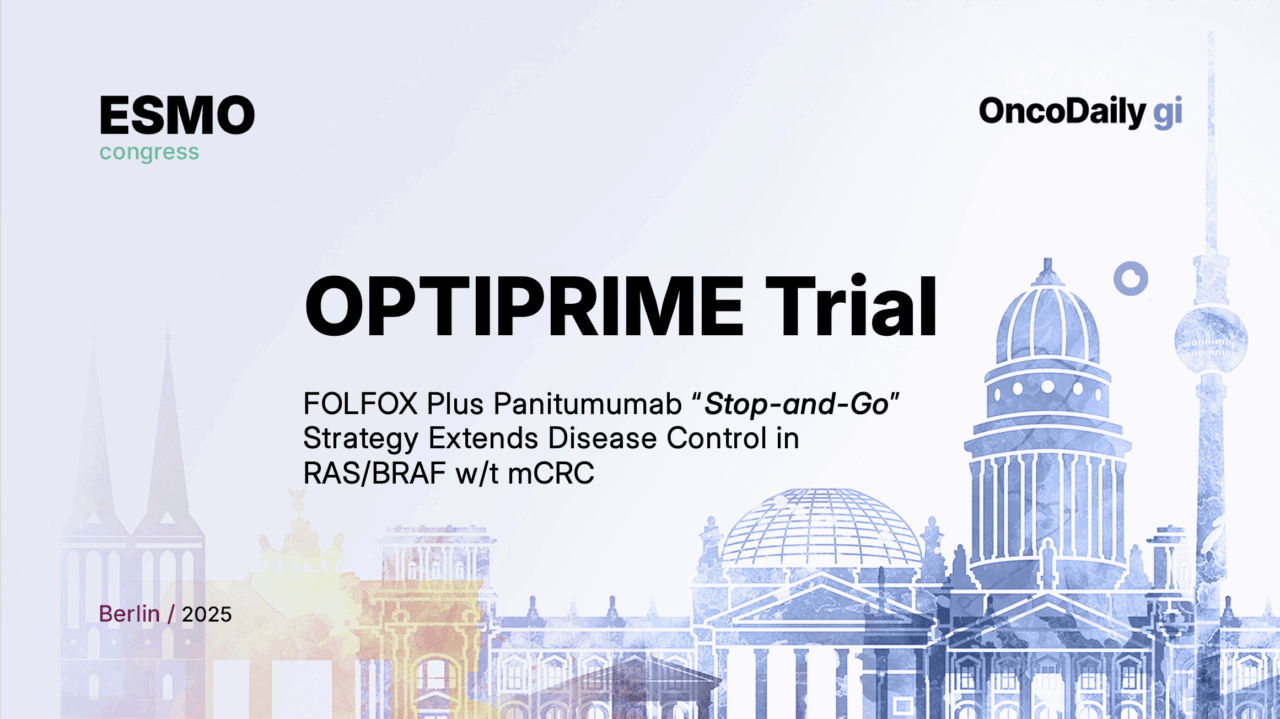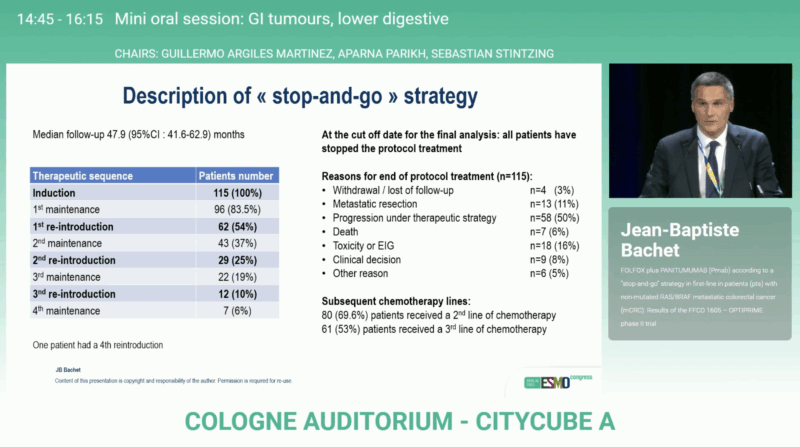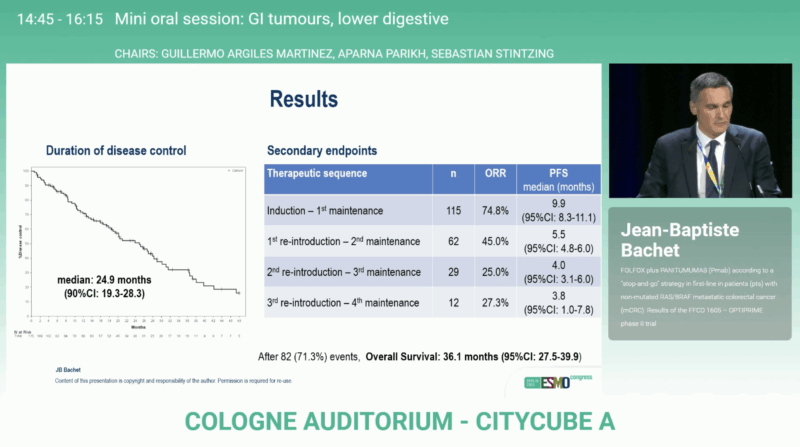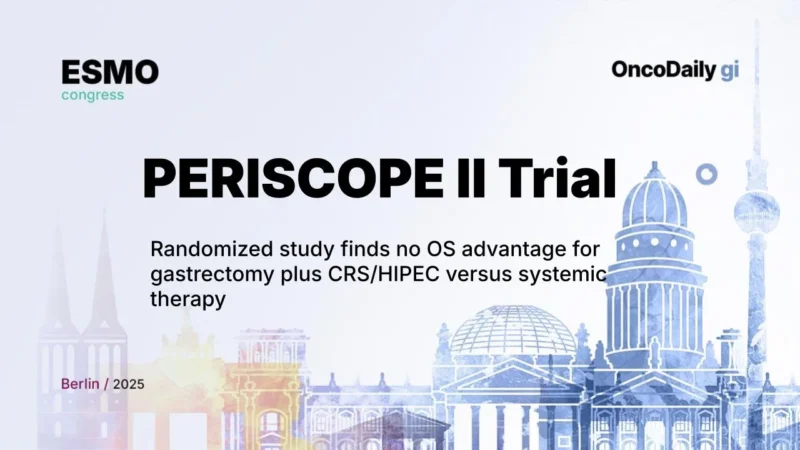Infinatamab deruxtecan (I-DXd) demonstrated intracranial efficacy with acceptable safety in patients with extensive-stage small cell lung cancer (ES-SCLC) and baseline brain metastases, according to data from the primary analysis of the phase 2 IDeate-Lung01 trial (NCT05280470) presented during the 2025 ESMO Congress.1
In those with baseline brain metastases (n = 65), the intracranial confirmed objective response rate (cORR) was 46.2% (95% CI, 33.7%-59.0%). Specifically, 30.8% of patients achieved a complete response (CR) as their best overall response, 15.4% experienced a partial response (PR), and 44.6% had stable disease (SD); 1.5% of patients experienced progressive disease (PD), and 7.7% were not evaluable (NE). The confirmed disease control rate (cDCR) was 90.8% (95% CI, 81.0%-96.5%). The median duration of response (DOR) was 6.2 months (95% CI, 4.0-7.9), and the median time to response (TTR) was 1.4 months (range, 0.9-8.5).
Moreover, in patients who had not previously received brain radiotherapy for baseline brain metastases (n = 26), I-DXd elicited an intracranial cORR of 57.7% (95% CI, 36.9%-76.6%). In those with baseline brain target lesions (n = 29), the intracranial cORR with the agent was 65.5% (95% CI, 45.7%-82.1%), and the central nervous system (CNS) cDCR was 96.6% (95% CI, 82.2%-99.9%).
“Intracranial efficacy with I-DXd [at] 12 mg/kg was promising, with 30.8% of patients achieving an intracranial CR, contributing to an intracranial cORR of 46.2% and DCR of 90.8%,” Pedro Simoes da Rocha, MD, PhD, said in a presentation of the data. Rocha is a medical oncologist at Vall d’Hebron University Hospital in Barcelona, Spain, and an International Association for the Study of Lung Cancer (IASLC) SCLC committee member.
What Did IDeate-Lung01 Examine?
The multicenter, randomized, open-label, phase 2 study included patients with histologically or cytologically documented ES-SCLC who were at least 18 years of age, had an ECOG performance status no higher than 1, and had previously received at least 1 but no more than 3 lines of platinum-based chemotherapy.2 Patients must have experienced radiologically documented disease progression on or after their most recent previous systemic treatment; they also needed to have at least 1 measurable lesion by RECIST 1.1 criteria. Those with asymptomatic brain metastases were allowed.
For part 1 of the study, the dose-optimization portion of the research, patients were randomly assigned 1:1 to receive I-DXd at 8 mg/kg every 3 weeks (n = 46; arm 1) or at 12 mg/kg every 3 weeks. For part 2, the extension portion, the agent was further examined at the 12-mg/kg dose.
The primary end point was ORR by blinded independent central review (BICR), and secondary end points included DOR, progression-free survival (PFS), DCR, and TTR by BICR and investigator assessment. Other end points comprised overall survival (OS), investigator-assessed ORR, safety, pharmacokinetics, and immunogenicity.
Prior data from the IDeate-Lung01 study shared during the IASLC 2025 World Conference on Lung Cancer indicated that when I-DXd was given at a dose of 12 mg/kg every 3 weeks (n = 137), it elicited a systemic cORR of 48.2% (95% CI, 39.6%-56.9%). The DCR was 87.6% (95% CI, 80.9%-92.6%). The median TTR was 1.4 months (range, 1.0-8.1), and the median DOR was 5.3 months (95% CI, 4.0-6.5). Moreover, the median PFS was 4.9 months (95% CI, 4.2-5.5), and the median OS was 10.3 months (95% CI, 9.1-13.3).
A subgroup analysis of patients with asymptomatic brain metastases identified by CNS BICR at study baseline was conducted and shared during the 2025 ESMO Congress.1 Brain CT or MRI was done at baseline for all patients. Those determined to have brain metastases had brain CT/MRI every 6 weeks for 36 weeks and every 12 weeks thereafter.
What Did the Patient Population Look Like in IDeate-Lung01?
Of the 137 total patients who received I-DXd at a dose of 12 mg/kg, 65 had baseline brain metastases, and 72 did not. Of those who did, 39 received prior brain radiotherapy, and 26 did not. A total of 29 patients had brain target lesions at baseline with a median size of 17 mm (range, 10-68); 15 of these patients had prior brain radiotherapy and 14 did not.
The median patient age was 61.0 years (range, 39.0-76.0). Moreover, 80.0% of patients had an ECOG performance status of 1, and 20.0% had a status of 0. The median number of prior lines of systemic therapy received was 2 (range, 1-3).
What Was Learned About the Systemic and Intracranial Efficacy of I-DXd in ES-SCLC?
In those with baseline brain metastases, the agent led to a systemic cORR of 46.2% (95% CI, 33.7%-59.0%). Best overall responses included CR (1.5%), PR (44.6%), and SD (43.1%); 7.7% of patients had PD, and 3.1% were NE. The systemic cDCR was 89.2% (95% CI, 79.1%-95.6%), the median DOR was 4.3 months (95% CI, 3.0-5.8), the median TTR was 1.4 months (range, 1.0-8.1), the median PFS was 4.5 months (95% CI, 4.0-5.4) and the median OS was 10.4 months (range, 7.9-15.3).
In those without baseline brain metastases (n = 72), the cORR with the agent was 50.0% (95% CI, 38.0%-62.0%) with best overall responses of CR in 2.8% of patients, PR in 47.2% of patients, and SD in 36.1% of patients; 6.9% of patients had PD, and 6.9% were NE. The cDCR in this group was 86.1% (95% CI, 75.9%-93.1%), the median DOR was 5.9 months (95% CI, 4.0-8.3), the median TTR was 1.4 months (range, 1.2-4.0), the median PFS was 5.4 months (95% CI, 4.2-6.7), and the median OS was 10.1 months (95% CI, 8.4-13.3).
Concordance between systemic and CNS objective response was 75.4%, Rocha said, adding that the concordance between systemic and CNS disease control was 86.2%. “OS and PFS were similar for patients with and without baseline brain metastases,” he said.
I-DXd showed intracranial efficacy irrespective of previous treatment for brain metastases at baseline. In those with prior radiotherapy (n = 39), the cORR was 38.5% (95% CI, 23.4%-55.4%); in those who received prior radiotherapy within 6 months prior to the study (n = 28), the cORR was 39.3% (95% CI, 21.5%-59.4%) and in those who received it 6 months or longer before study (n = 11), the cORR was 36.4% (95% CI, 10.9%-69.2%).
“Progression in the brain was uncommon, suggesting that I-DXd may prevent brain metastases,” Rocha added. Among the 65 patients with baseline brain metastases, 35.4% experienced progression in the brain; in those who had not received prior radiotherapy (n = 26), this rate was 23.1%, and in those who had (n =39), this rate was 43.6%. In those without baseline brain metastases (n = 72), 12.5% experienced progression in the brain.
The agent also elicited responses in those with brain target lesions at baseline (n = 29), he added. The CNS cORR in those without prior radiotherapy (n = 14) was 71.4% (95% CI, 41.9%-91.6%); in those with prior radiotherapy (n = 15), the CNS cORR was 60.0% (95% CI, 32.3%-83.7%). Concordance between systemic and CNS objective response was 69.0%, according to Rocha. The CNS DOR was 5.7 months (95% CI, 4.1-7.1) and the CNS TTR was 1.3 months (range, 0.9-3.0).
What Is the Safety Profile of I-DXd in ES-SCLC and Baseline Brain Metastases?
Any-grade treatment-related adverse effects (TRAEs) were experienced by 87.7% of patients with brain metastases at baseline (n = 65) and 91.7% of those without baseline brain metastases (n = 72); these effects were grade 3 or higher for 30.8% and 41.7% of patients, respectively. They were serious in 10.8% and 25.0% of cases. In those with baseline brain metastases, TRAEs led to dose delay, reduction, or treatment discontinuation for 23.1%, 15.4%, and 7.7% of patients; in those without baseline brain metastases, these rates were 27.8%, 15.3%, and 11.1%. TRAEs proved fatal for 1.5% and 6.9% of patients, respectively.
The most common TRAEs experienced by at least 10% of patients with baseline brain metastases were nausea (any grade, 49.2%; grade ≥3, 1.5%), decreased appetite (32.3%; 1.5%), neutropenia (30.8%; 6.2%), anemia (27.7%; 7.7%), asthenia (23.1%; 1.5%), fatigue (20.0%; 3.1%), lymphopenia (20.0%; 12.3%), diarrhea (16.9%; 0%), leukopenia (15.4%; 0%), thrombocytopenia (13.8%; 6.2%), increased aspartate aminotransferase level (10.8%; 1.5%), constipation (10.8%; 0%), and pneumonitis (10.8%; 0%).
What Is Next for I-DXd?
The phase 3 IDeate-Lung02 study (NCT06203210) will be evaluating the intracranial activity of I-DXd vs physician’s choice of treatment in the form of topotecan, amrubicin, or lurbinectedin (Zepzelca) in patients with relapsed SCLC.3
References
- Simoes da Rocha PF, Kim YJ, Han J-Y, et al. Intracranial activity of ifinatamab deruxtecan (I-DXd) in patients (pts) with extensive-stage (ES) small cell lung cancer (SCLC) and baseline (BL) brain metastases (BM): Primary analysis of IDeate-Lung01. Presented at: 2025 ESMO Congress; October 17-21, 2025; Berlin, Germany. Abstract 2760MO.
- Ahn M-J, Johnson ML, Paz-Ares L, et al. Ifinatamab deruxtecan (I-DXd) in extensive-stage small cell lung cancer: Primary analysis of the phase 2 IDeate-Lung 01 study. Presented at: International Association for the Study of Lung Cancer (IASLC) 2025 World Conference on Lung Cancer; September 6-9, 2025; Barcelona, Spain. Abstract OA06.03.
- A study of Ifinatamab deruxtecan versus treatment of physician’s choice in subjects with relapsed small cell lung cancer (IDeate-Lung02). Clinical Trials.gov. Updated August 7, 2025. Accessed October 18, 2025. https://clinicaltrials.gov/study/NCT06203210












